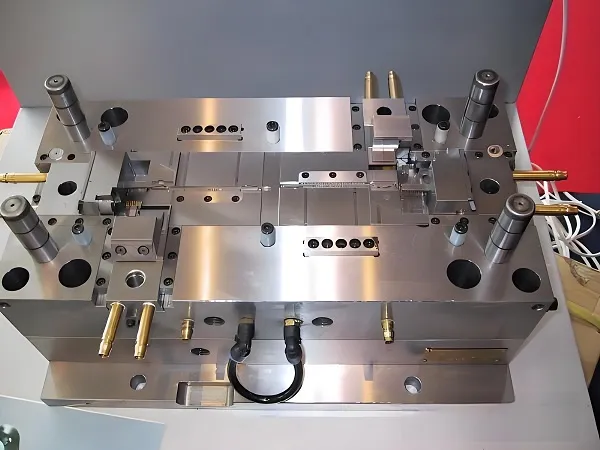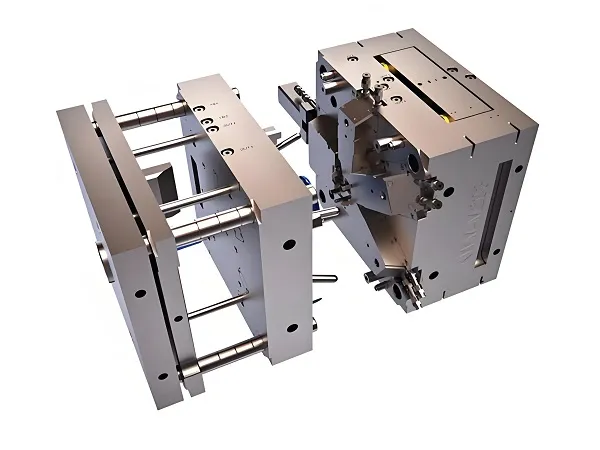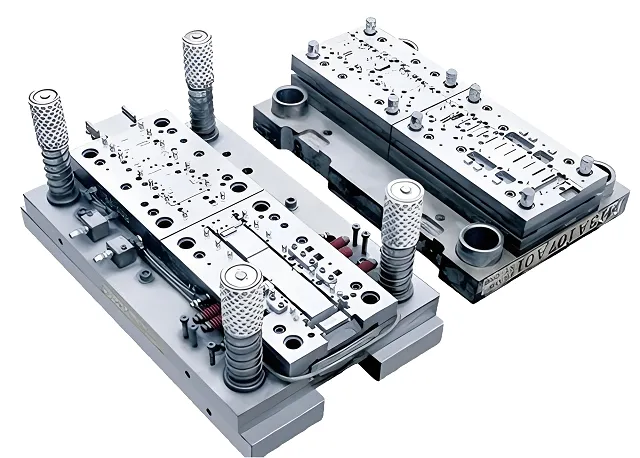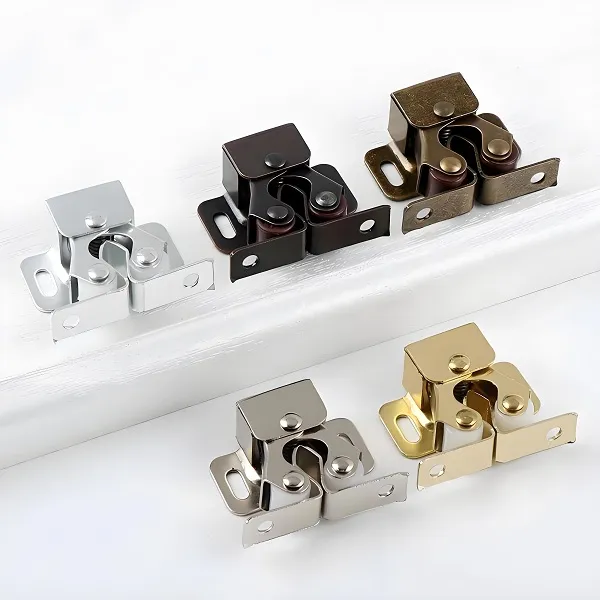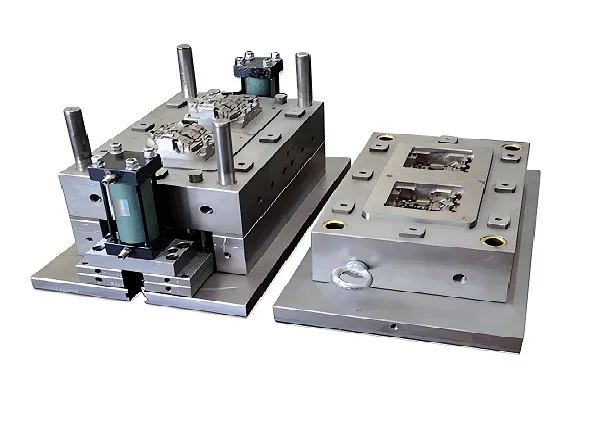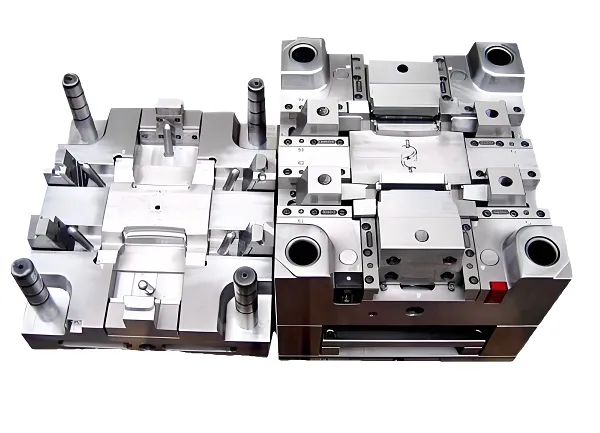In the dynamic landscape of modern manufacturing, alloy steel CNC machining stands as a cornerstone technology, enabling the production of high-performance components that meet the rigorous demands of diverse industries. Alloy steels, celebrated for their exceptional strength, durability, and versatility, when paired with the precision of Computer Numerical Control (CNC) technology, deliver parts capable of withstanding extreme conditions, heavy loads, and complex operational requirements. This article explores the technical capabilities, customization processes, material expertise, quality control measures, and broad applications of alloy steel CNC machining, highlighting its pivotal role in driving innovation and reliability across sectors such as automotive, aerospace, energy, and industrial equipment manufacturing.
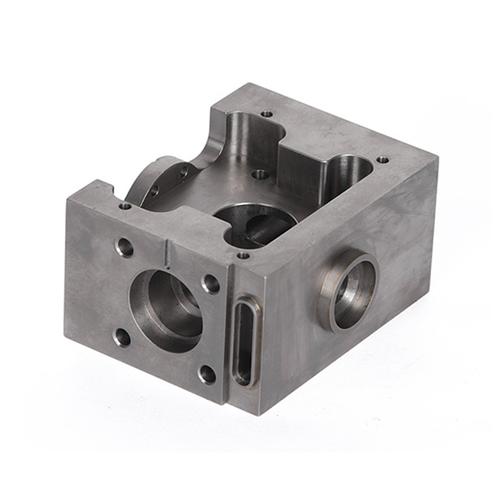
I. Technical Capabilities: Precision and Power in Alloy Steel Machining
(A) Exceptional Dimensional Accuracy
CNC machining systems designed for alloy steels are engineered to achieve extraordinary dimensional accuracy. With positioning accuracy reaching ±0.002mm and repeat positioning accuracy of ±0.001mm, these systems fabricate alloy steel components with extremely tight tolerances. For high-precision machinery components like gears in industrial gearboxes or shafts in aerospace engines, such precise tolerances are critical for ensuring smooth operation, minimizing wear, and extending the lifespan of assembled systems. Advanced in-line measuring devices, integrated with CNC machines, continuously monitor and adjust the machining process in real-time, guaranteeing adherence to the strictest dimensional specifications.
(B) Complex Geometry Machining
The multi-axis capabilities of modern CNC machining technology enable the creation of alloy steel parts with highly intricate geometries. Whether it’s parts with complex internal cavities for fluid flow in hydraulic systems, multi-stepped and contoured surfaces for aerospace structural components, or components with detailed threading and profiling for automotive powertrain applications, CNC machines execute these designs with precision. Compared to traditional machining methods, multi-axis CNC machining reduces setup-related errors from ±0.01mm to within ±0.003mm. This improvement not only enhances part accuracy but also boosts production efficiency by up to 70%, ensuring timely delivery of complex alloy steel components without compromising quality.
(C) High-Speed and High-Precision Machining with Specialized Techniques
Alloy steels, known for their higher hardness and strength compared to plain carbon steels, demand specialized machining techniques. CNC systems are equipped with high-torque spindles (up to 20,000 RPM) and advanced cutting tools, such as carbide-coated end mills and inserts, designed specifically for alloy steel machining. Coolant-delivery systems are optimized to manage heat generation during machining, preventing tool wear and maintaining workpiece integrity. For instance, when machining high-strength alloy steel parts for heavy-duty industrial equipment, high-speed machining with precise feed rates and depths of cut achieves a surface finish as fine as Ra 0.4μm while preserving the component’s structural strength.
II. End-to-End Customization: Tailoring Alloy Steel Parts to Your Exact Requirements
(A) In-Depth Requirement Analysis and Design Conceptualization
When clients present alloy steel part requirements, experienced engineers initiate detailed discussions to understand the application. Factors such as the operating environment (temperature, humidity, corrosive substances), mechanical loads (tensile, compressive, torsional forces), and functional or aesthetic requirements are considered. Using advanced CAD/CAM software and finite element analysis (FEA) tools, multiple design concepts are generated. FEA simulations analyze stress distribution, deformation, and potential failure points under various operating conditions. Engineers collaborate closely with clients, iteratively refining designs based on feedback until a solution aligns perfectly with performance goals, budget, and timeline.
(B) Strategic Material Selection and Cost Analysis
Based on the finalized design, the most suitable alloy steel grade is recommended. Different grades offer varying combinations of strength, hardness, toughness, and other properties tailored to specific applications:
Low-alloy steels (e.g., 4140, 4340): Known for good hardenability and high strength-to-weight ratio, these steels are used in automotive axles, gears, and shafts. 4140 alloy steel, heat-treated to achieve a tensile strength of up to 1,030 MPa, is ideal for components bear heavy loads and dynamic stresses.
High-alloy steels (e.g., 17-4 PH, M2): Offering superior corrosion resistance, high-temperature strength, and wear resistance, these steels are used in critical applications. 17-4 PH stainless steel, combining corrosion resistance with high strength after heat treatment, is suitable for aerospace, medical, and marine industries. M2 high-speed steel is essential for cutting tools due to its wear resistance and ability to maintain hardness at elevated temperatures.
Tool steels (e.g., D2, H13): Formulated for tool-making applications, these steels provide high hardness, wear resistance, and toughness. D2 tool steel, with high carbon and chromium content, is used for dies, punches, and cutting tools. H13 hot-work tool steel is well-suited for high-temperature operations like die casting and forging dies.
Simultaneously, a comprehensive cost analysis is conducted, factoring in material costs, machining complexity, production volume, and additional finishing or heat-treatment requirements. The goal is to provide a transparent and competitive quote that offers the best value for investment.
(C) Precision Manufacturing and Order Tracking
Once the design and quote are approved, production begins. Clients can track order progress in real-time through a dedicated online platform. Skilled technicians operate state-of-the-art CNC turning, milling, and drilling machines, following strict manufacturing protocols to ensure each alloy steel part meets exacting quality standards. From raw material procurement to final machining and finishing operations, clients are kept informed at every stage. In-process inspections detect and address potential issues early, ensuring smooth production and timely delivery without compromising quality.
(D) Rigorous Quality Assurance and Timely Delivery
After production, each alloy steel part undergoes a rigorous multi-stage quality inspection. Coordinate measuring machines (CMMs) with sub-micron accuracy verify dimensional accuracy, ensuring critical dimensions are within ±0.002mm. Surface finish measurements ensure compliance with specifications for functionality and aesthetics. Mechanical tests, including tensile strength, hardness, and impact testing, validate material properties and part performance. Non-destructive testing methods, such as ultrasonic testing and magnetic particle inspection, detect internal defects or surface-breaking flaws. Only parts passing all tests are packaged and shipped, with comprehensive after-sales support ensuring long-term performance.
III. Strategic Material Selection: Harnessing the Power of Alloy Steel Grades
(A) Low-Alloy Steels: Balancing Strength and Cost-Effectiveness
Low-alloy steels are widely used due to their favorable combination of strength, hardenability, and cost-effectiveness. Containing small amounts of alloying elements like chromium, nickel, molybdenum, and vanadium, these steels enhance mechanical properties compared to plain carbon steels. In the automotive industry, 4140 alloy steel is used for crankshafts, connecting rods, and transmission shafts, with heat treatment providing high strength and toughness for high-stress, dynamic loading conditions. Additionally, low-alloy steels are easily machined using CNC techniques, enabling the production of complex, tight-tolerance parts.
(B) High-Alloy Steels: Superior Performance in Demanding Environments
High-alloy steels are designed to meet demanding requirements for corrosion resistance, high-temperature strength, and wear resistance. With a higher percentage of alloying elements than low-alloy steels, they offer unique properties. 17-4 PH stainless steel is used in aerospace for landing gear parts, engine brackets, and structural fasteners, where strength and corrosion resistance are critical. In the medical industry, it is used for surgical instruments and implantable devices due to biocompatibility and excellent mechanical properties. M2 high-speed steel is essential for manufacturing cutting tools used in CNC machining, enabling precision and efficient cutting of tough materials like alloy steels.
(C) Tool Steels: Precision and Durability for Tool-Making
Tool steels are formulated for applications requiring high hardness, wear resistance, and toughness, such as dies, punches, and cutting tools. D2 tool steel, with high carbon and chromium content, forms a hard, wear-resistant carbide structure when heat-treated, ideal for long tool life and abrasion resistance. H13 hot-work tool steel, with good thermal conductivity and resistance to thermal fatigue, is widely used in die casting and forging operations. In CNC machining, tool steels create custom cutting tools that handle alloy steels and other tough materials, ensuring precision and quality in final components.
IV. Stringent Quality Control: Ensuring Excellence in Every Alloy Steel Part
(A) Raw Material Inspection
All incoming alloy steel raw materials undergo strict quality checks before production. Spectroscopic analysis verifies chemical composition, ensuring compliance with specified standards and correct alloying element proportions. Hardness testing, tensile testing, and microstructural analysis assess mechanical properties and internal structure. Only materials passing these inspections are approved for manufacturing, laying a solid foundation for final product quality and performance.
(B) In-Process Monitoring
Throughout manufacturing, advanced monitoring technologies ensure consistent quality. Real-time sensors continuously monitor machining parameters like cutting speeds, feed rates, tool wear, and spindle loads. Statistical process control (SPC) techniques analyze sensor data to detect and correct potential issues promptly. If parameters deviate from set values, automated systems adjust the machining process in real-time to maintain quality. For example, detected tool wear triggers parameter adjustments or tool changes to preserve dimensional accuracy and surface finish.
(C) Final Product Validation
Before shipping, each alloy steel part undergoes a comprehensive final inspection. In addition to dimensional and surface finish checks, functional tests verify performance. For mechanical system parts, load-testing simulates actual operating conditions to ensure the part withstands expected forces without failure. Visual inspections ensure freedom from surface defects or cosmetic imperfections. Only parts passing all validation tests are deemed ready for delivery, ensuring high-quality products that meet expectations.
V. Diverse Industry Applications: Alloy Steel Components Powering Multiple Sectors
(A) Automotive Industry
In the automotive sector, alloy steel CNC-machined components enhance vehicle performance, durability, and safety. High-strength low-alloy steels are used for engine components like crankshafts, camshafts, and connecting rods, as well as transmission parts, axles, and suspension components. These components withstand high-stress, high-temperature, and dynamic loading conditions during vehicle operation. Precision-machined alloy steel parts ensure perfect fits, smooth operation, and long service life, contributing to overall vehicle reliability and performance.
(B) Aerospace Industry
The aerospace industry demands lightweight yet extremely strong components to withstand flight rigors. Alloy steels, particularly high-alloy steels and certain low-alloy steels, are used for critical applications. Landing gear parts, engine mounts, and structural fasteners are often made from alloy steels. CNC machining capabilities produce these parts with the highest precision, meeting strict aerospace standards for dimensional accuracy, surface finish, and material integrity. The use of alloy steel CNC-machined components reduces aircraft weight, improves fuel efficiency, and enhances safety and performance.
(C) Energy Industry
In the energy sector, alloy steel components are essential for power generation, transmission, and distribution systems. In power plants, alloy steel is used for turbine shafts, boiler tubes, and pressure vessels, which must withstand high temperatures, pressures, and corrosive environments. CNC-machined alloy steel parts for the energy industry meet stringent sector requirements, ensuring reliable operation and long service life. In the oil and gas industry, alloy steel components for drilling equipment, pipelines, and valves resist corrosion, abrasion, and high-pressure conditions, improving efficiency and safety in energy production and distribution.
(D) Industrial Equipment Manufacturing
Alloy steel CNC-machined components are widely used in industrial equipment manufacturing, including machinery for construction, mining, agriculture, and manufacturing itself. Components like gears, shafts, bearings, and frames made from alloy steels withstand heavy loads, impact, and wear. High-quality alloy steel parts, precision-manufactured using CNC technology, ensure industrial equipment durability and reliability, reducing downtime and maintenance costs. Whether in large-scale mining excavators, high-speed manufacturing machines, or construction cranes, alloy steel components contribute to efficient and safe machine operation.
VI. Frequently Asked Questions (FAQ)
(A) What is the typical lead time for custom alloy steel CNC-machined parts?
Lead times depend on design complexity, alloy steel type, production volume, and raw material availability. For simple designs and small-scale runs (up to 100 pieces), delivery is typically within 5-7 business days. More complex designs or larger volumes may take 2-4 weeks. Expedited services are available for urgent orders, with lead times as short as 2-3 days for selected projects, subject to availability and additional fees.
(B) Can you provide alloy steel parts with specific heat-treatment requirements?
Yes, in-house heat-treatment facilities and expertise enable processes like annealing, normalizing, quenching, tempering, and case hardening. Heat-treatment processes are tailored to achieve desired hardness, strength, toughness, or wear resistance, with careful control and monitoring ensuring consistent part quality and performance.
(C) What is the maximum size of alloy steel parts that you can machine?
CNC machining capabilities handle alloy steel parts of various sizes. The maximum size depends on available machinery, but generally, parts up to several meters in length, width, and height can be accommodated. For larger parts, specialized machining centers or combined operations ensure precision and quality. Contact the engineering team for specific size requirements.
(D) How do you ensure the corrosion resistance of alloy steel parts?
In addition to selecting corrosion-resistant alloy steel grades like stainless alloy steels, various surface-treatment options enhance corrosion resistance. These include electroplating (zinc, nickel, chrome plating), powder coating, hot-dip galvanizing, and specialized corrosion-resistant coatings. The engineering team recommends the most suitable method based on application requirements, operating environment, and budget.
(E) Can you work with my existing alloy steel part design?
Yes, the engineering team reviews existing design files (CAD drawings, 3D models) and provides feedback on manufacturability, performance, and potential improvements. Reverse engineering of existing parts is also available to create accurate CAD models and ensure new parts match or improve upon originals. Whether for replacement parts or design optimization, the team has the expertise to meet needs.
VII. Customer Testimonials
A leading automotive manufacturer faced durability issues with transmission shafts experiencing premature wear and failure under heavy loads. After switching to 4140 alloy steel CNC-machined shafts from our company, the shafts exhibited a 60% increase in wear resistance and a 40% reduction in failure rate, significantly improving vehicle reliability and reducing warranty costs.
An aerospace company required lightweight yet strong components for a new aircraft model. Using 17-4 PH stainless steel and advanced CNC machining, we produced landing gear parts that met strict aerospace standards while reducing weight by 15%. This weight reduction contributed to improved fuel efficiency and extended aircraft range, earning the company’s trust for future projects.
A power generation company needed high-temperature-resistant alloy steel components for a new turbine. Our H13 hot-work tool steel components, precision-machined and heat-treated, withstood extreme temperatures and pressures, reducing maintenance downtime by 30% and extending component lifespan by 50%. The company praised the components’ reliability and performance.
Conclusion
Alloy steel CNC machining combines the exceptional properties of alloy steels with the precision of CNC technology to deliver high-performance components across diverse industries. From technical capabilities and customization processes to strategic material selection and stringent quality control, every aspect ensures parts that meet the most demanding requirements. With applications ranging from automotive and aerospace to energy and industrial equipment, alloy steel CNC-machined components continue to drive innovation, reliability, and efficiency in modern manufacturing. Partner with us to leverage our expertise and capabilities for your next project, and experience the difference of precision-engineered alloy steel solutions.

